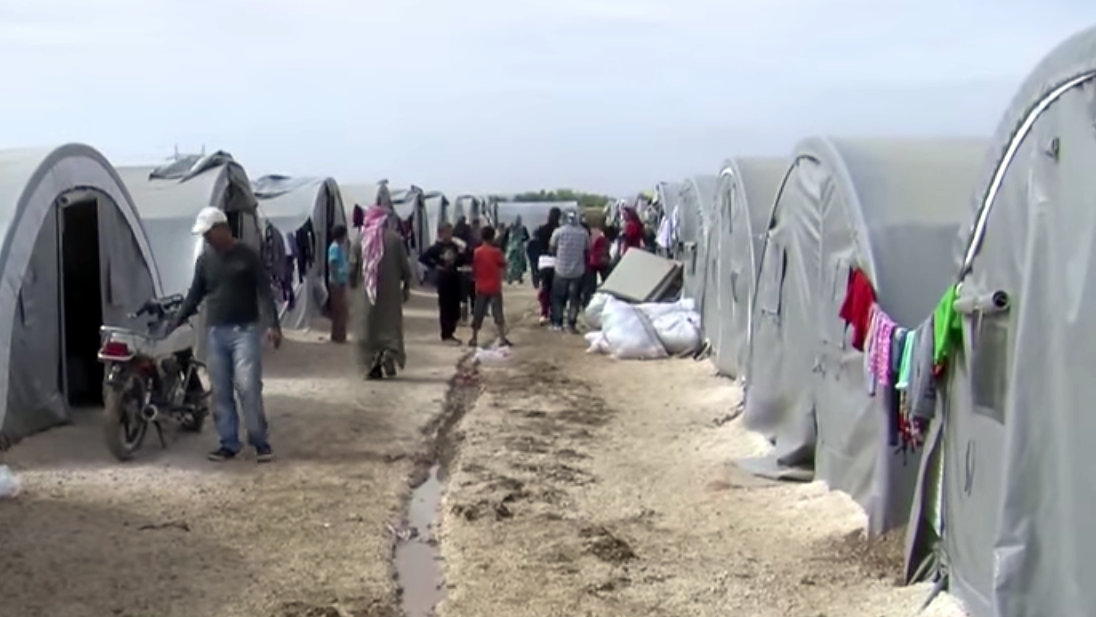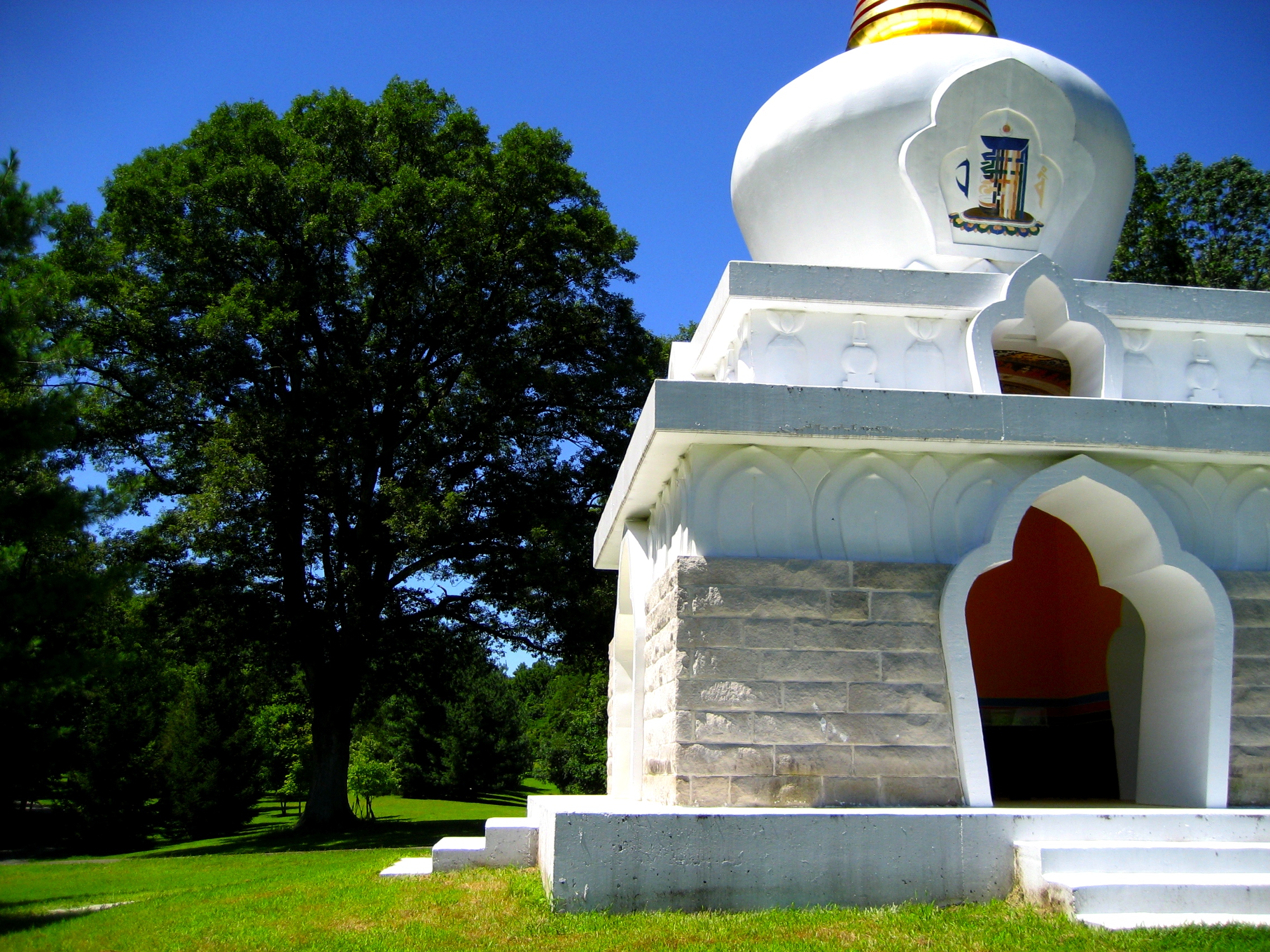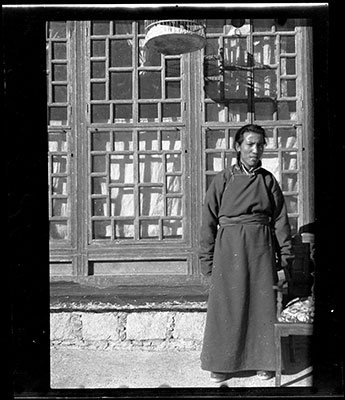|
Tsepon Shargyalpa
Shakabpa Wangchuk Deden (, January 11, 1907 – February 23, 1989), better known as Tsepon W. D. Shakabpa, was a Tibetan nobleman, scholar, statesman and former Finance Minister of the government of Tibet. Biography Tsepon Shakabpa was born in Lhasa Tibet. His father, Laja Tashi Phuntsok Shakabpa was a senior lay official in charge of the government treasury, and the steward of Lhasa. His father's brother was Trimon Norbu Wangyal, who became the most influential minister in the cabinet of the 13th Dalai Lama. His mother was Samdup Dolma, from the Ngodrupding family. The third Reting Gyalpo Ngawang Yeshe Tsultrim Gyaltsen was born into the Ngodrupding family, and ruled Tibet as Regent from 1845 to 1862. His mother's older brother was Lonchen Changkyim, one of the group of three Prime Ministers during the reign of the 13th Dalai Lama. The younger brother of his mother, was Ngoshi Jampa Thuwang, personal physician of the 13th Dalai Lama. Both his maternal uncles accompanied the Gr ... [...More Info...] [...Related Items...] OR: [Wikipedia] [Google] [Baidu] |
Tibet (1912–1951)
Tibet () was a Limited recognition, ''de facto'' independent state in East Asia that lasted from the collapse of the Qing dynasty in 1912 until its Annexation of Tibet by the People's Republic of China, annexation by the People's Republic of China in 1951.; The Tibetan Ganden Phodrang regime was a Tibet under Qing rule, protectorate under Qing rule until 1910 when the Qing dynasty decided to assert greater control over the region. In 1912 the Provisional Government of the Republic of China (1912), provisional government of the Republic of China (ROC) succeeded the Qing and received an Imperial Edict of the Abdication of the Qing Emperor, imperial edict inheriting the claims over all of its territories. However, the newly formed ROC was unable to assert any real authority in Tibet. The 13th Dalai Lama declared that Tibet's relationship with China ended with the fall of the Qing dynasty and proclaimed independence, although this was not formally recognized by other countries. Tibe ... [...More Info...] [...Related Items...] OR: [Wikipedia] [Google] [Baidu] |
Kham
Kham (; ) is one of the three traditional Tibet, Tibetan regions, the others being Domey also known as Amdo in the northeast, and Ü-Tsang in central Tibet. The official name of this Tibetan region/province is Dotoe (). The original residents of Kham are called Khampas (), and were governed locally by chieftains and monasteries. Kham covers a land area distributed in multiple province-level administrative divisions in present-day China, most of it in Tibet Autonomous Region and Sichuan, with smaller portions located within Qinghai and Yunnan. Densely forested with grass plains, its convergence of six valleys and four rivers supported independent Kham polities of Tibetan warrior kingdoms together with Tibetan Buddhist monastic centers.Jann Ronis"An Overview of Kham (Eastern Tibet) Historical Polities" The University of Virginia The early trading route between Central Tibet and China traveled through Kham, and Kham is said to be the inspiration for Shangri-La in James Hilton's nove ... [...More Info...] [...Related Items...] OR: [Wikipedia] [Google] [Baidu] |
Encyclopædia Britannica
The is a general knowledge, general-knowledge English-language encyclopaedia. It has been published by Encyclopædia Britannica, Inc. since 1768, although the company has changed ownership seven times. The 2010 version of the 15th edition, which spans 32 volumes and 32,640 pages, was the last printed edition. Since 2016, it has been published exclusively as an online encyclopedia, online encyclopaedia. Printed for 244 years, the ''Britannica'' was the longest-running in-print encyclopaedia in the English language. It was first published between 1768 and 1771 in Edinburgh, Scotland, in three volumes. The encyclopaedia grew in size; the second edition was 10 volumes, and by its fourth edition (1801–1810), it had expanded to 20 volumes. Its rising stature as a scholarly work helped recruit eminent contributors, and the 9th (1875–1889) and Encyclopædia Britannica Eleventh Edition, 11th editions (1911) are landmark encyclopaedias for scholarship and literary ... [...More Info...] [...Related Items...] OR: [Wikipedia] [Google] [Baidu] |
Tsoltim Ngima Shakabpa
Tsoltim Ngima Shakabpa (, born 7 September 1943 in Lhasa) is a Tibetan banker, activist, writer and poet, one of the first to write in English, composing poems in this language in 1967. Son of the Tibetan Finance Minister Tsepon W. D. Shakabpa, he left Tibet in 1950 to study at St. Joseph's School, Darjeeling in India before working for the Tibetan government in exile and settle in the United States and was naturalized American. Biography Tsoltim Ngima Shakabpa is the youngest son of the Minister of Finance of the Tibetan Government in 1939-1950 Tsepon W. D. Shakabpa.''Voice of Tibet - a foreword by Robert Barnett'' , '' Phayul.com'', 5 juillet 2007 He was educated in Tibet which he left in 195 ... [...More Info...] [...Related Items...] OR: [Wikipedia] [Google] [Baidu] |
Kalimpong
Kalimpong is a town and the headquarters of an eponymous district in the Indian state of West Bengal. It is located at an average elevation of . The town is the headquarters of the Kalimpong district. The region comes under Gorkhaland Territorial Administration which is an autonomous governing body within the state of West Bengal. The Indian Army's 27 Mountain Division is located on the outskirts of the city. Kalimpong is known for its educational institutions, many of which were established during the British colonial period. It used to be a gateway in the trade between Tibet and India before China's annexation of Tibet and the Sino-Indian War. Kalimpong and neighbouring Darjeeling were major centres calling for a separate Gorkhaland state in the 1980s, and more recently in 2010. The municipality sits on a ridge overlooking the Teesta River and is a tourist destination owing to its temperate climate, natural environment and proximity to popular tourist locations in the ... [...More Info...] [...Related Items...] OR: [Wikipedia] [Google] [Baidu] |
Genghis Khan
Genghis Khan (born Temüjin; August 1227), also known as Chinggis Khan, was the founder and first khan (title), khan of the Mongol Empire. After spending most of his life uniting the Mongols, Mongol tribes, he launched Mongol invasions and conquests, a series of military campaigns, conquering large parts of Mongol conquest of China, China and Mongol invasion of Central Asia, Central Asia. Born between 1155 and 1167 and given the name Temüjin, he was the eldest child of Yesugei, a Mongol chieftain of the Borjigin, Borjigin clan, and his wife Hö'elün. When Temüjin was eight, his father died and his family was abandoned by its tribe. Reduced to near-poverty, Temüjin killed Behter, his older half-brother to secure his familial position. His charismatic personality helped to attract his first followers and to form alliances with two prominent Eurasian Steppe, steppe leaders named Jamukha and Toghrul; they worked together to retrieve Temüjin's newlywed wife Börte, who had b ... [...More Info...] [...Related Items...] OR: [Wikipedia] [Google] [Baidu] |
Tibet During The Ming Dynasty
Tibet (; ''Böd''; ), or Greater Tibet, is a region in the western part of East Asia, covering much of the Tibetan Plateau and spanning about . It is the homeland of the Tibetan people. Also resident on the plateau are other ethnic groups such as Mongols, Monpa people, Monpa, Tamang people, Tamang, Qiang people, Qiang, Sherpa people, Sherpa, Lhoba people, Lhoba, and since the 20th century Han Chinese and Hui people, Hui. Tibet is the highest region on Earth, with an average elevation of . Located in the Himalayas, the highest elevation in Tibet is Mount Everest, Earth's highest mountain, rising above sea level. The Tibetan Empire emerged in the 7th century. At its height in the 9th century, the Tibetan Empire extended far beyond the Tibetan Plateau, from the Tarim Basin and Pamirs in the west, to Yunnan and Bengal in the southeast. It then divided into a variety of territories. The bulk of western and central Tibet (Ü-Tsang) was often at least nominally unified under a ser ... [...More Info...] [...Related Items...] OR: [Wikipedia] [Google] [Baidu] |
Diaspora
A diaspora ( ) is a population that is scattered across regions which are separate from its geographic place of birth, place of origin. The word is used in reference to people who identify with a specific geographic location, but currently reside elsewhere. Notable diasporic populations include the Jewish Diaspora formed after the Babylonian exile; Assyrian diaspora following the Sayfo, Assyrian genocide; Greeks that fled or were displaced following the fall of Constantinople and the later Greek genocide as well as the Istanbul pogroms; the emigration of Anglo-Saxons (primarily to the Byzantine Empire) after the Norman Conquest, Norman Conquest of England; the Chinese people, southern Chinese and South Asian diaspora, South Asians who left their homelands during the 19th and 20th centuries; the Irish diaspora after the Great Famine (Ireland), Great Famine; the Scottish diaspora that developed on a large scale after the Highland Clearances, Highland and Lowland Clearances; Romani ... [...More Info...] [...Related Items...] OR: [Wikipedia] [Google] [Baidu] |
Thubten Jigme Norbu
Thubten Jigme Norbu () (August 16, 1922 – September 5, 2008), recognised as the 16th Taktser Rinpoche, but he was married to a woman in 1960.https://web.archive.org/web/20130401130413/http://globalview.cn/ReadNews.asp?NewsID=15145 达赖的大哥土登诺布是这个家庭里面第一个活佛,1960年与一位藏族女士结婚 The Dalai Lama's eldest brother, Thubten Norbu, was the first living Buddha in the family. He married a Tibetan woman in 1960. He was a Tibetan lama, writer, civil rights activist and professor of Tibetan studies and was the eldest brother of the 14th Dalai Lama, Tenzin Gyatso. He was one of the first high-profile Tibetans to go into exile and was the first to settle in the United States. Early life Thubten Jigme Norbu was born in 1922 in the small, mountain village of Taktser in the Amdo County of Eastern Tibet. Independence walks In 1995, Norbu cofounded the International Tibet Independence Movement (ITIM). He led three walks for Tibet's inde ... [...More Info...] [...Related Items...] OR: [Wikipedia] [Google] [Baidu] |
Taktser Rinpoche
Taktser Rinpoche (; ) was born in 1922 in "the small village of Taktser, meaning 'roaring tiger,' located in the Amdo region of eastern Tibet." He became a lama of the Gelugpa school of Tibetan Buddhism and was named Thubten Jigme Norbu, the oldest brother of Tenzin Gyatso—the 14th Dalai Lama of Tibet. Soon after birth, he was recognized by the 13th Dalai Lama as the reincarnation of the previous Taktser Rinpoche, who was "one of the thirty or so reincarnated lamas who were a part of Kumbum's tradition." On September 5, 2008, Norbu, 86, died at his Indiana, US, home after illness for many years. He was survived by his wife Kunyang Norbu, and 3 sons. Taktser Lama Thubten Jigme Norbu's predecessor as the Taktser Rinpoche, known as Taktser Lama, was Norbu's and his brother the 14th Dalai Lama's paternal grandmother's elder brother, in other words their great uncle. One of the 30 or so reincarnated lamas who were part of Kumbum Monastery's tradition, he had been recognised as the Ta ... [...More Info...] [...Related Items...] OR: [Wikipedia] [Google] [Baidu] |
Gyalo Thondup
Gyalo Thondup (; ; – 8 February 2025) was a Tibetan political operator in exile. The second-oldest brother of the 14th Dalai Lama, he was his closest advisor. From 1952 onward, he was based in India. Through the 1950s and 1960s, he worked with the Central Intelligence Agency of the United States during its unsuccessful campaign to use armed Tibetan rebels against China. Thondup helped to negotiate the Dalai Lama's safe passage to India following his escape from Lhasa in 1959. After US support of the Tibetan resistance ended in the 1970s, he often acted as the Dalai Lama's unofficial envoy to China and attempted to negotiate his return. His bestselling memoir, ''The Noodle Maker of Kalimpong: The Untold Story of My Struggle for Tibet'', was published in 2015. Following his death in 2025, ''The Washington Post'' said Thondup was "arguably the second-most important figure in modern Tibetan history", viewed by many governments around the world as a de facto political leader ... [...More Info...] [...Related Items...] OR: [Wikipedia] [Google] [Baidu] |
Tibetan Resistance
Protests and uprisings against the government of the People's Republic of China have occurred in Tibet since 1950, and include the 1959 uprising, the 2008 uprising, and the subsequent self-immolation protests. Over the years the Tibetan government in exile, the Central Tibetan Administration (CTA), has shifted the goal of its resistance stance from attempting measured cooperation with autonomy, to demanding full independence, to seeking "genuine autonomy for all Tibetans living in the three traditional provinces of Tibet within the framework of the People's Republic of China".The Middle Way Approach , Full text. However, not all exiled Tibetans are content with pursuing the current CTA policy of the Middle Way Approach and many expressed their frustration in 2008, against the Dalai Lama's wishes, b ... [...More Info...] [...Related Items...] OR: [Wikipedia] [Google] [Baidu] |









